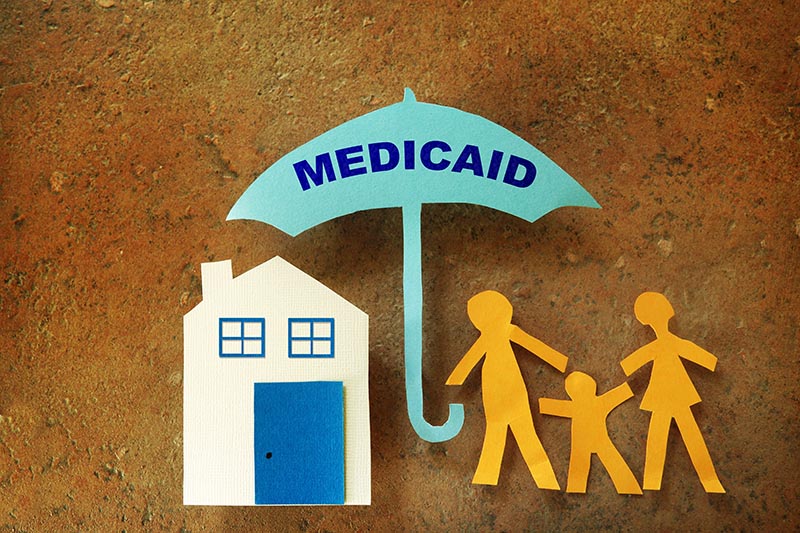From the News Tribune (Jefferson City, MO) —
Lower-income states that expanded Medicaid may be receiving a bigger piece of the federal pie.
By Joe Gamm
An analysis of federal spending shows distributions from Medicaid and the Children’s Health Insurance Program move money from higher-income states to lower-income states.
“Redistribution of Federal Funding Across States Due to the Financing of Medicaid and CHIP,” a study funded by the Robert Wood Johnson Foundation and conducted by Urban Institute, found the movement of revenue occurs primarily because of the higher Medicaid/CHIP federal matching rates the poorer states receive (based on tax contributions they make to the federal treasury), according to the report.
Federal Medical Assistance Percentages are used to determine how much is to be allocated for certain medical and social programs. They vary state by state, depending on how well to do the state is. Mississippi, for example, the state with the highest match, has a match rate of 77 percent, which means that for every $23 the state contributes, the federal government provides $77. The minimum match is $50. Twelve states receive the minimum matches. (CHIP matching rates are proportionally higher in each state, according to the report.)
Missouri’s match remains at 66/34, which means for every $34 of state money provided (mostly for Medicaid), the state receives a $66 match.
“The federal Medicaid/CHIP payments made to a state depend on overall state spending on those programs,” the report states. “They vary both by the generosity of the programs (i.e., expansiveness of eligibility and benefits provided, which states can extend beyond federal minimum requirements) and the state’s federal matching rate.”
Missouri voters passed Medicaid expansion in August, and the state will add about 230,000 residents to its program in July. The program already serves about 900,000 people.
A fiscal note of the initiative petition that created the ballot measure said the cost of the program would be anywhere from a $200 million annual cost to a savings of $1 billion.
“If a state has a low federal matching rate, but broad eligibility and a rich benefit package, it could receive considerable federal dollars,” the report states. “In contrast, a state with a high federal matching rate but limited eligibility and benefits could receive fewer federal dollars.”
States with the highest Medicaid/CHIP spending rates per-capita in 2019 (above $9,500 per low-income resident) tended to have low FMAPs. Two exceptions were Maine and Montana, which have below average per-capita incomes.
States with the lowest spending tended to have lower incomes — Alabama, Florida, Georgia, Kansas, Nevada, Oklahoma and South Carolina each had spending below $5,000 per low-income resident.
Missouri’s rate is about $7,650, which is right in the middle.
The data appear to show despite having higher matching rates, which should encourage spending, the lower-income states spend considerably less, on average, per resident with low income than higher-income states, the report finds.
Excluding expansion, which will occur in July, Missouri in 2019 contributed about 1.8 percent of the revenue the federal government distributed to Medicaid/CHIP programs in 2019. Yet, it received about 2.6 percent of disbursements, according to the report. That outcome is likely to continue under expansion.
“All of the non expansion states are, by definition, net contributors to expansion population spending: They pay their share of federal taxes to finance care for the expansion population, but they receive no federal dollars from the program because they have declined to participate,” the report states.
Several states that have adopted expansion are, nonetheless, “net contributors” — specifically the District of Columbia, Illinois, Massachusetts, Minnesota and New Jersey.
The report came up with three findings — Medicaid/CHIP spending contributes to distribution of federal funds across states, funding generally moves from high-income states to low-income states through the programs and there is redistribution of Medicaid/CHIP funding from low-income states to high-income states because the former have refused to expand Medicaid eligibility, according to the report.
“Many higher-income states receive high shares of total federal Medicaid/CHIP spending (and have more generous programs than average), but their residents and businesses contribute even more to federal revenues,” the report states. “We also show that states that have not expanded Medicaid eligibility under the (Affordable Care Act, which is commonly called Obamacare) make net contributions to the other states that have expanded, and many of these non-expansion states have lower per capita incomes. If the remaining states were to expand Medicaid eligibility, however, they would receive more in federal dollars than they contribute in taxes, as is the case with the traditional programs.”
…
Continue reading at newstribune.com

